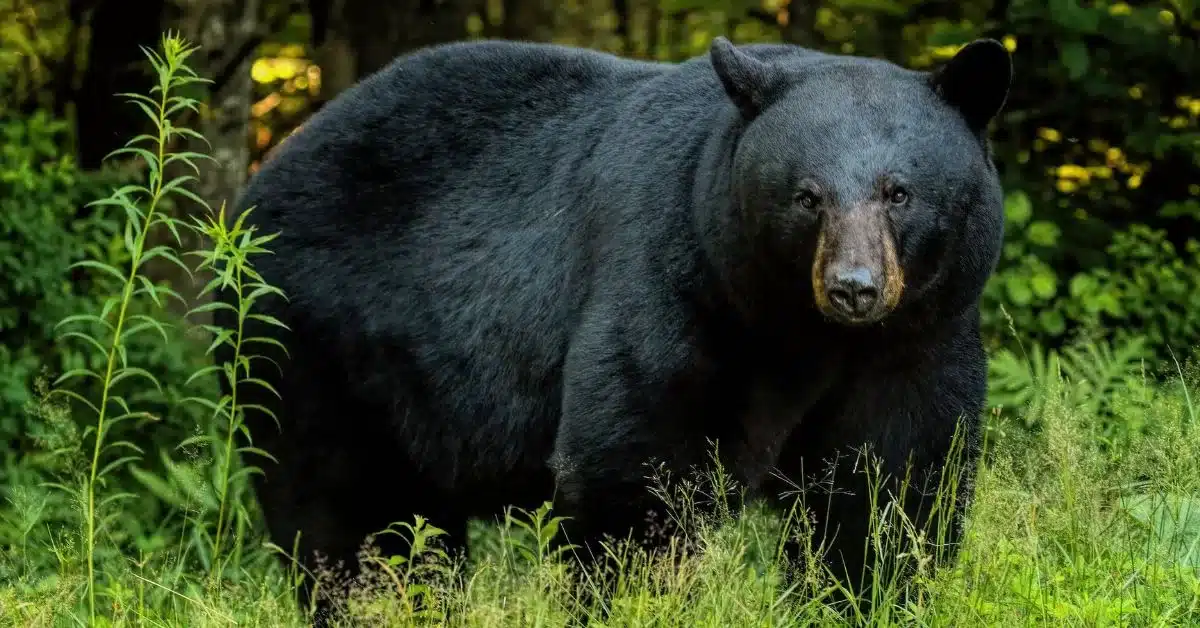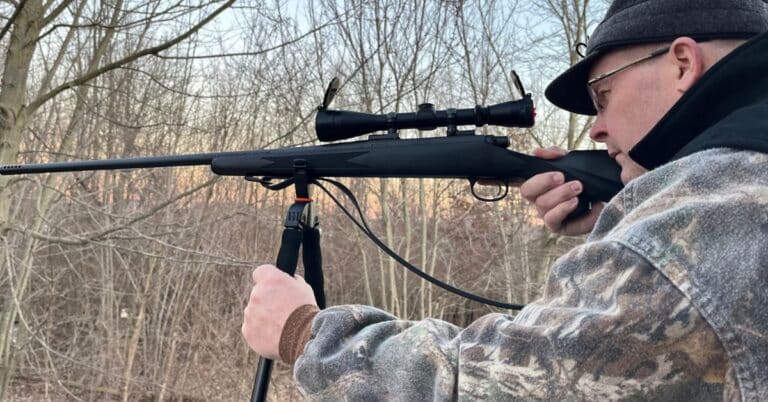Michigan Black Bear Hunting: Step by Step
Bear season typically starts around early September and goes for a couple of weeks into late October. Michigan has three distinct hunting periods in various units: the first season, second season, and third season. Each period offers different opportunities and challenges for hunters. I thought I would share a bear hunting story before getting into more details of Michigan black bear hunting.
My Standoff with a Black Bear
It was about 4:00 in the afternoon when I arrived at my black bear hunting spot in Michigan. I settled into my ground blind and hunting routine. On this particular hunt, I was armed with my bow. To pass the time, I began reading a book.
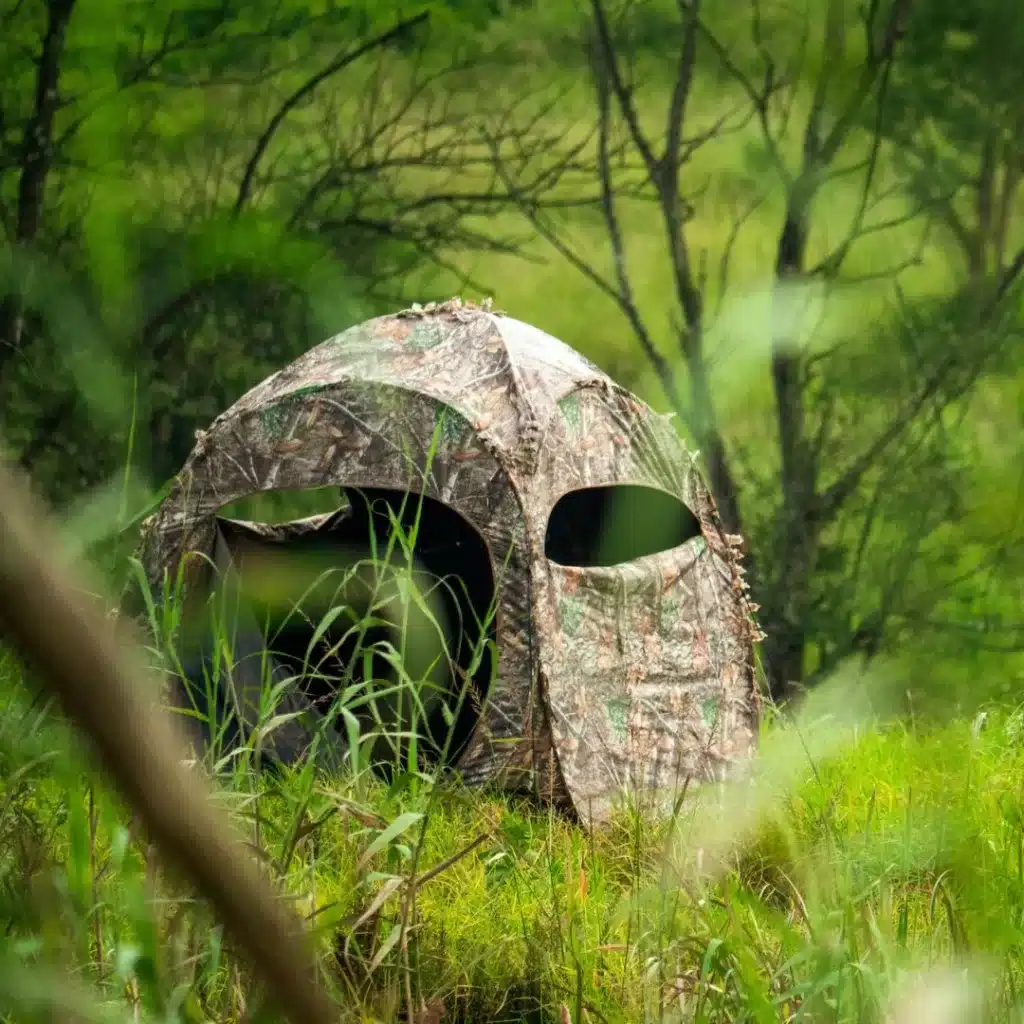
About 30 short minutes later, I peered out my blind window. It was a small, semicircular-shaped opening. But when I looked outside, the view was not what I expected. Instead of seeing the typical Michigan woods with ferns, brush, and trees, I saw the full head of a black bear. His eyes were locked on mine,. His face filled the entire window.
I froze for a moment, realizing what was happening. My book had distracted me, and I was caught off guard. The intimidation I felt was profound.
Eye to Eye: The Silent Intruder
The bear was standing just 15 yards away, staring straight at me. Then, ever so slowly, I reached down for my bow. However, at that moment, my attempt to be a stealth hunter was not enough. The bear seemed to sense my movement and began to backpedal cautiously. He lifted each paw with intention, as if trying to sneak away without being noticed.
Meanwhile, I attempted to move my head out of his line of sight, hoping he wouldn’t see me. If I could ease my face away from his field of vision, I thought I would have a chance to slow down his movement. The tension was growing.
Finally, the bear either caught my scent or realized something was wrong. He turned and bolted back into the pine trees, letting out a loud huffing “woof” with each powerful stride. I could hear the thudding of his paws as he retreated. The sound echoed through the forest and sent chills down my spine.
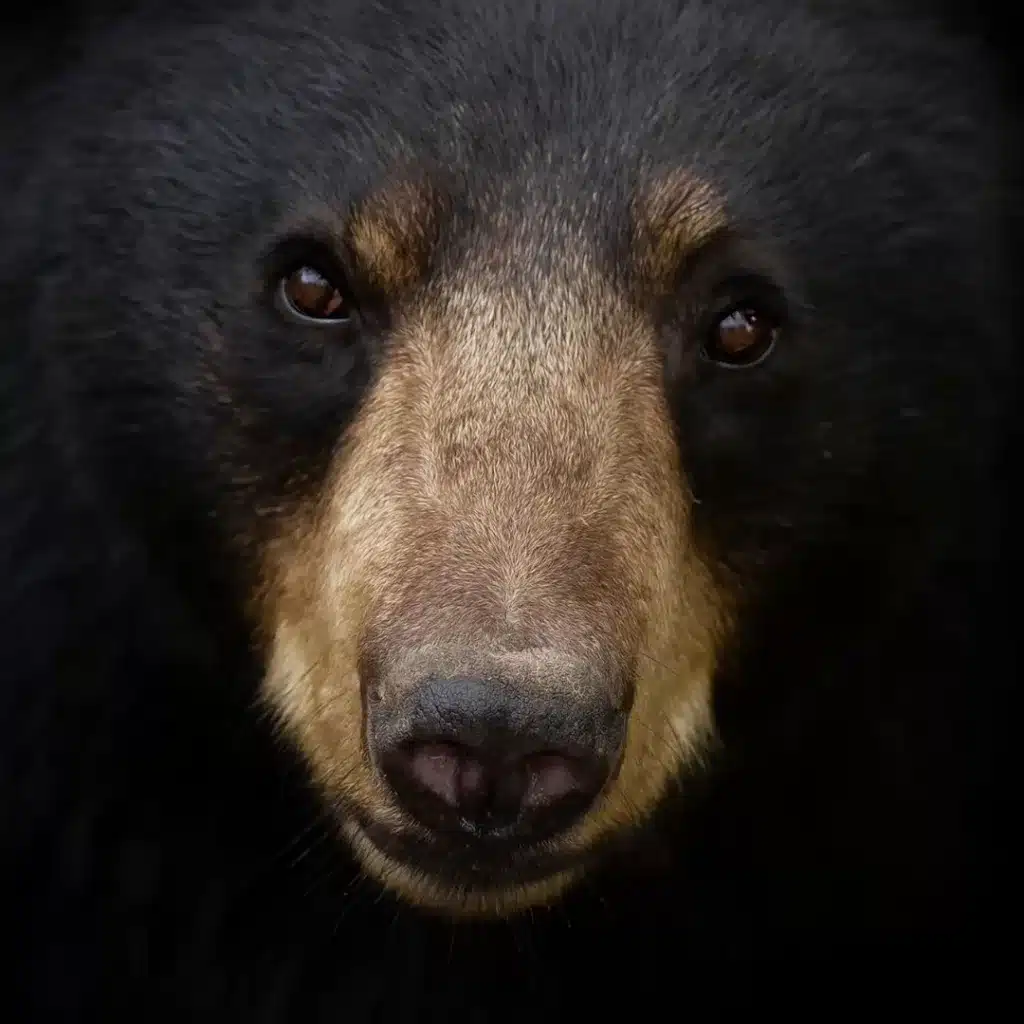
The rest of the night, I was on edge, unnerved by how close the bear had been. The experience left a lasting impression on me. From that day forward, I never brought anything to distract myself while hunting bear. He could have easily stuck his nose into the blind. That face-off with a bear changed the way I hunt.
Reflecting on how close I came to a bear attack, I decided I would always bow hunt from a tree stand. The sense of security a tree provides compared to the vulnerability of being on the ground has been etched in my memory. Staying vigilant and respecting wild animals is something I will never forget.
Overview of the Bear Hunting Season in Michigan
There are three distinct hunting seasons:
- First season: Begins in early September.
- Second season: Starts in mid-September.
- Third season: Occurs in late October.
Success rates can vary by season and region, but Michigan’s upper peninsula is particularly known for high bear populations and favorable hunting conditions. Chances of success are typically better in the earlier seasons due to less hunting pressure and more curious bears. As the season progresses, bears become more cautious due to increased human activity. Weather also plays a significant role; cooler weather tends to increase bear activity, while hotter periods may reduce it, limiting movement to nighttime hours.
You are supposed to register your bear with the DNR after a successful hunt at a bear registration station, and this data is used to provide statistics on success rates. This information is typically available on the DNR website.
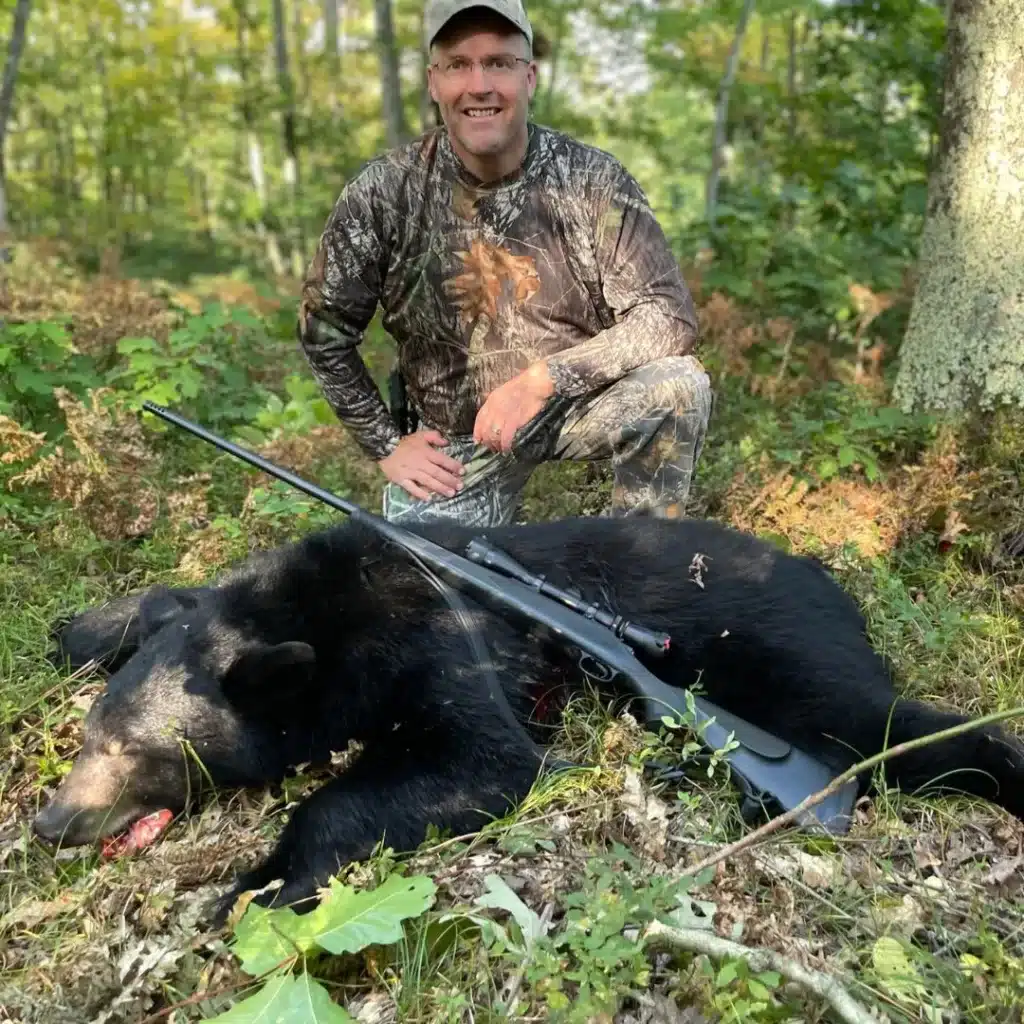
I have had success on two guided hunts; one in Manitoba and one in Michigan. The Canada bear was killed with my bow and my Michigan bear with a .300 Win Mag rifle. I hope to be successful in the Upper Peninsula without a guide for my next bear hunt.
How the Michigan Bear Tag System Works
To obtain a Michigan bear license, hunters must submit an application and participate in a bear draw. Drawing a tag requires that you submit a request for a bear license, and if you’re successful, you can hunt in one of the designated bear management units. These units are composed of multiple counties, forming larger hunting areas.
Primary Bear Management Units in Michigan
The most popular bear management units, known for higher populations and larger Michigan bears, include the Red Oak and Baldwin units. There are also units up in Michigan’s Upper Peninsula, but the exact popular ones in the UP were not specified.
The Preference Point System and Its Impact on Hunters
The points system in Michigan helps improve hunters’ chances over time. If you are an unsuccessful applicant, meaning you did not draw a bear tag, you get what they call a bear point. This point carries over to the following year, increasing your chances in subsequent lotteries. If you go several years without drawing a tag, you accumulate more points, thereby improving your odds each year.
Population and Management
Changes in Michigan’s Black Bear Population
The DNR reports that the number of bears in the northern Lower Peninsula is increasing. Bear sightings are also becoming more common further south in Michigan. In the UP, bear populations are slightly up. Overall, the population is thriving, although some hunters believe that the bears are smaller than usual due to a higher reproduction rate, introducing more younger bears into the population.
Goals of the Michigan Department of Natural Resources (DNR)
The primary goal of the DNR is to maintain a healthy bear population. The main goal is to keep the numbers thriving so that the bears don’t get into a category of being potentially extinct.
Insights on Bear Population Growth Over the Past Decade
The bear population in Michigan has been thriving. They keep adding numbers to the quotas from one year to the next, which means they’re making more permits available, indicating a healthy and growing population.
Tags, Licenses, and Regulations
Determining License Quotas
License quotas are based on DNR research and census numbers of the bear population. They establish what they feel is a healthy quota to maintain the bear population at a healthy level while allowing for a sustainable harvest.
Strategies for Obtaining Leftover Licenses
Leftover licenses are a great opportunity for hunters who are less selective about their hunting areas. These licenses may require more scouting and effort, but they can still provide a good chance for a successful hunt.
Importance of Bear Registration Stations
Bear registration stations are essential for tracking the bear population and hunter success. You can obtain information about bear check stations on the Michigan DNR website during the bear season. Registration of harvested bears is mandatory at a bear registration station.
If you want more in depth detail on licenses, tags and regulations check out my Bear Hunting Licensing Tips.
Expert Insight
Advice on Using Bait Sites and Bait Piles
Bait hunts are a common and effective strategy in Michigan. Unlike Canada, in Michigan, you cannot use bait barrels; your bait pile has to be established on the open ground. Popular baits include corn, stale breads, and doughnuts, though hunters should avoid using chocolates and certain sweets that are harmful to bears. Details on acceptable baits can be found in the Black Bear Digest provided by the DNR.

Behavior and Ecology of Michigan’s Black Bears
Bears like cedar swamps and swampy areas where they can bed down. They prefer areas with thick vegetation for cover and food sources and are more active during cooler weather.
Selecting a Good Hunting Area
When choosing a hunting area, look for regions with thick vegetation and proximity to water sources. Find an area that is thick with healthy vegetation, not only for them to have food available to them but also to provide sources of cover.
Hunting on Public Land in Places Like Ottawa National Forest
Hunters should be mindful of other hunters and outdoor enthusiasts. Competition in the woods can affect your hunting experience, so it’s important to be aware of your surroundings and respectful of other users of the land.
Lesson Learned: Bear Hunting is Unpredictable
Years ago, I had an opportunity to hunt in the Upper Peninsula in the Newberry unit. It was my first time hunting bears, and I used a tree stand and a bow. I saw skunks and raccoons at the bait site and had a very large bear come in. Despite hitting the bear, we couldn’t recover it due to heavy rain, which made tracking difficult. The guide estimated the bear to be around 600 pounds, making it an exciting and memorable hunt.
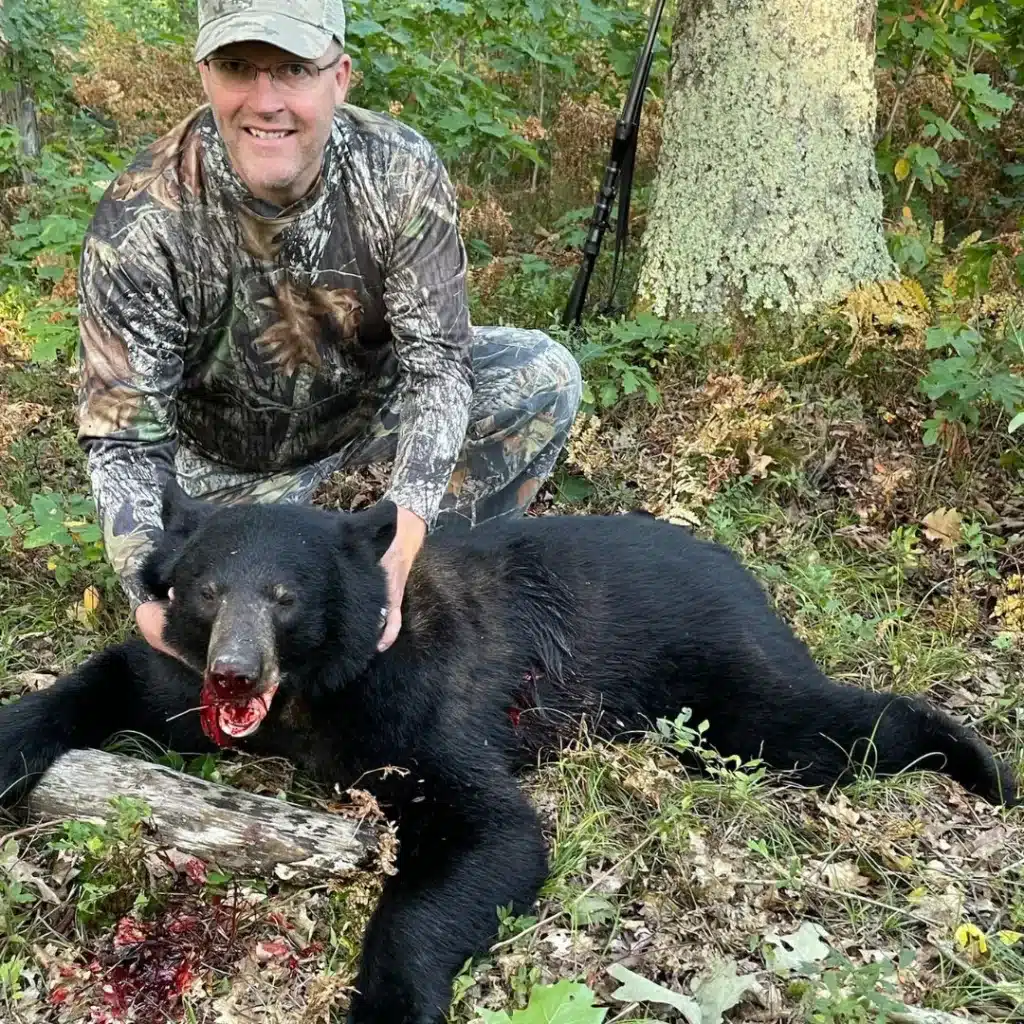
This experience taught me a valuable lesson about the unpredictability of nature and the importance of preparation. Even with the best equipment, a good guide, and a successful shot, factors like weather can greatly impact the outcome. Being ready for these challenges is crucial in hunting and in all outdoor activities. Despite the disappointment, every hunt is a chance to learn and grow, and each setback makes the next success even more rewarding.
Preparation Tips
First-time bear hunters should focus on staying still and minimizing movement, as bears are very cautious and can detect anything out of place. Not being able to sit still is a common mistake that can ruin a hunt.
Using the Michigan Black Bear Digest and DNR Website
The Black Bear Digest and the DNR website provide valuable information on regulations, baiting strategies, and bear behavior. These resources are essential for planning a successful hunt.
Best Practices for a Quality Hunt
Selecting areas with abundant food sources and cover, such as cedar swamps, increases your chances of encountering a bear. Pay attention to weather patterns and choose cooler periods for hunting. Scouting and understanding bear behavior are crucial for success.
Common Offenses and How to Avoid Them
Common mistakes include not sitting still, which can spook bears. Bears are notorious for knowing when something is not right and will avoid the area. Maintaining patience and minimizing movement are key to avoiding such mistakes.
Hunters must adhere to all regulations set by the DNR, including proper use of kill tags and hunting only within designated areas. The state also emphasizes ethical hunting practices to ensure sustainable bear populations.
The Future of Bear Hunting in Michigan
As bear populations grow and expand into southern units, the future of bear hunting in the State of Michigan looks promising. With careful management and conservation efforts, hunters can expect continued opportunities for successful hunts.
For the most accurate and detailed information, including any recent updates or changes, it’s always best to refer directly to the Michigan DNR’s official bear hunting page (Michigan.gov).

